Packing an INCH bag is something that all serious preppers and survivalists should do. If things really go south, this is the bag that will rescue you.
The INCH bag is a survival bag you pack when you don’t have intentions to return home. The INCH stands for “I’m Never Coming Home”. It should include everything you need to survive living away from home.
This article will explain further what the bag is and how to prepare one. If you don’t have one yet, you can consider this your ultimate guide.
Quick Navigation
- What Exactly Is An INCH bag?
- INCH Bag vs. Bug Out Bag
- The INCH Backpack
- Inside The INCH bag: The Comprehensive List
- Additional Tips
- Conclusion
What Exactly Is An INCH bag?
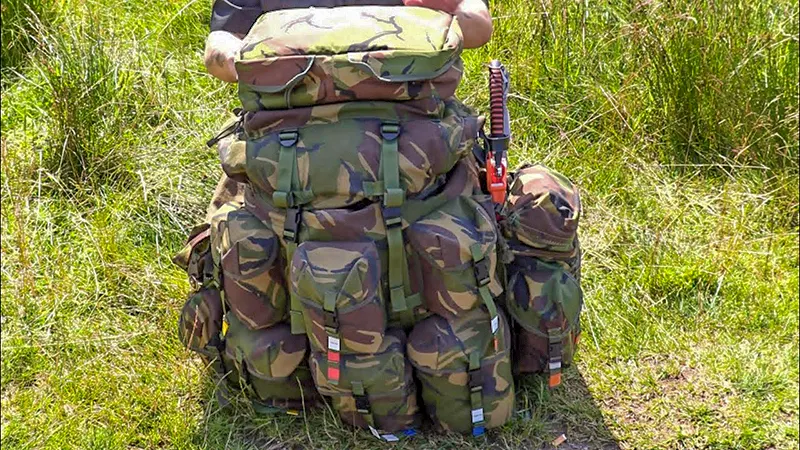
As stated above, INCH is an initial for I’m Never Coming Home.
An INCH bag includes the supplies required for long-term wilderness survival. You can think of it as a super-sized bug-out bag (BOB): everything you need, plus a few items you could need in more significant amounts.
The INCH bags distinguish themselves in their concentration on actual survival gear and other equipment, even if at the sacrifice of weight.
INCH Bag vs. Bug Out Bag
Why not simply bring your bug-out bags? Why do you need another bag?
If you are new to prepping and backpacking, you have probably noticed that preppers prefer to keep survival packs on hand.
Different scenarios need different bags, and your INCH bag is handy in survival situations. So, when should you utilize the INCH bag instead of the bug-out bag?
You use bug out bags when:
- You can’t remain home for the time being and must leave safely.
- You will be gone for a short period (a few days or at least 72 hours)
- You will only pack supplies and equipment to keep you going while you make your way to your bug-out destination (food items, bottled water, etc.)
You pack an INCH bag when:
- You leave your house and cannot or will not return for safety or personal reasons.
- You will be gone for an extended period.
- You will carry equipment and materials to aid your long-term search for resources in the wilderness (cooking utensils, simple hunting or fishing gear, water filters, etc.)
The distinction between the two is obvious: one is for a few days or short-term survival situation until it is safe to return home, while the other is for a long-term survival scenario.
The INCH Backpack
Your backpack will have a lot of equipment, so having a robust, lightweight, and dependable backpack is step one in assembling your ultimate INCH bag. You may have the best equipment in the world, but you are in significant danger if your bag falls apart after a few weeks.
In addition to quality, it is necessary to have a backpack large enough to hold everything you need. The ideal size for INCH bags is about 70L to 80L.
Look for a service pack composed of 500-1000 Cordura nylon if you want absolute durability. Also, choosing a bag with too much space, which you will never use, is a bad idea.
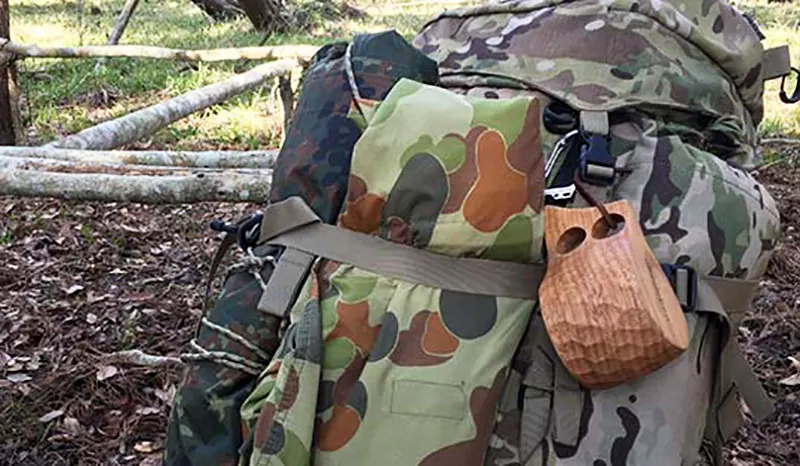
The INCH backpack should be the final thing you purchase so that you can verify that everything you need fits inside. If your INCH bag is hefty, an external frame might help you to carry your weight more evenly.
Internal frame packs are excellent as well. It is convenient to have pockets on the hip belt. Although not ideal for bushwhacking, having a water bottle pocket on the side is also a fantastic bonus.
What Is An Ideal INCH Bag?
Here are some points to consider:
Size Does Matter
As stated above, consider purchasing a 70L to 80L backpack. But don’t just choose any bag—look for ones made with the most rigid materials, such as ultra-strong nylon.
Practical Carrying Weight
Though INCH bags may be heavier than average, going overboard is a no-no. What good is a bag that you can’t carry? If you want to prepare by bringing an enormous weight, consider rucking (carrying a heavy pack for many kilometers) and develop your survival fitness.
Remember that you’ll take this fully equipped backpack for extended periods. Your INCH bag’s overall weight should be at most 25% of your entire body weight.
Type of Frame Pack
Another factor to consider is using an internal or external frame pack. The main distinction between the two is that you can see the backpack’s visible frames with an external frame pack.
On the other hand, internal packs are closer to the body and sleeker. There are advantages and disadvantages to purchasing either an internal or external pack.
Fit
Is there a waist belt? Is the bag appropriately fitting you, with the suitable torso length and adjustable straps to distribute the burden between your hips and shoulders? Is it adequately supported?
External frame packs are often preferable for heavy weights. Padded comforts, compression straps, and an adjustable fit are all desirable.
Durability
Is the cloth long-lasting and waterproof? Don’t get misled into purchasing a low-quality bag just because it is inexpensive. Your pack must be able to sustain this weight through thick and thin, and it must also be able to do it in a manner that is not devastating for you.
Modularity
Your INCH bag and its contents will most likely vary with you as your plans or the seasons change. It is insufficient to have a high-capacity backpack with just one giant cell. Modularity is essential, as is the flexibility to extend the pack or attach more storage when needed.
Now, who can use an INCH bag?
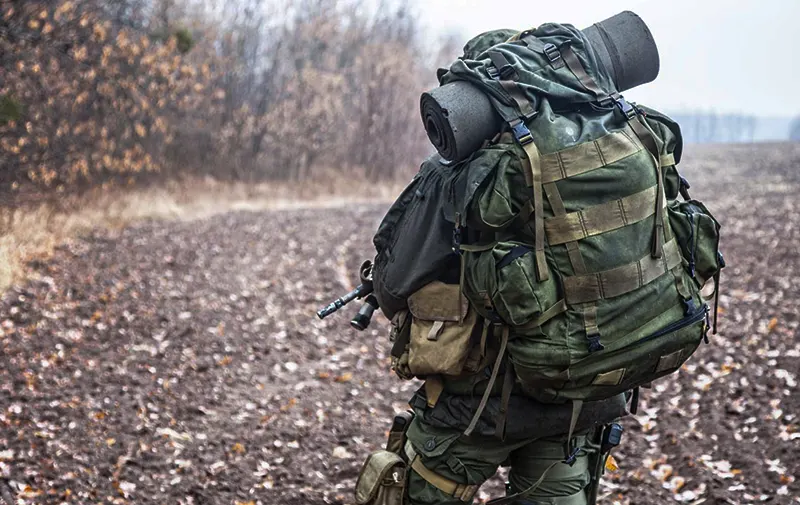
INCH bags will come in handy for folks who are:
- Armed with the ability and expertise to manage the contents of an INCH bag
- Preparing to go on a group trip
- On the way to a location with plenty of food
Have you ever spent more than seven days nonstop in a tent? Have you ever gone hunting, trapping, or fishing? Have you done a 100-mile trek with a big pack? Do you hear the wild calling? If your answers are mostly yes, consider putting together an INCH bag.
Everyone should have an INCH bag on hand, but you must ensure that you are competent to use it. It does not mean you need a license or anything. You just need to know how to use the contents of an INCH bag.
INCH bags may be meaningless to someone who has never used hunting equipment or a compact fishing rod, but it is a treasure mine for those who do.
Another thing to consider is utilizing your INCH bag in a group setting. Though not required, in a group setting will be much more useful than when you’re alone simply because you will have more support.
And if you or your company is going to a part of the woods, forest, or mountains where there are a lot of animals considered food, carrying an INCH bag will surely come in handy.
The focus is on the food. Wild food collection is significantly different from recreational hunting, fishing, and gathering in reality.
Inside The INCH bag: The Comprehensive List
Now that we’ve established some ground rules and foundations, it is time to decide what you will put in your INCH bag.
As a general guideline, only bring anything you know how to utilize.
Following that, here is the checklist that you can add to your INCH backpack to improve your odds of survival:
For Shelter
When you need somewhere to sleep or to be secure and dry at night, you must have shelter necessities in your INCH backpack.
Tent
A tent, a camping necessity, is a good alternative for shelter if you want to spend time in the woods. Instead of cramming it inside the INCH bag and wasting room, you can connect it to the exterior through an external loop or bag belt.
Tarp
Pack a tarp for convenience. A tarp is small enough to pack into a bag, light enough to carry, and has numerous possible shelter configurations. You may rapidly master the many arrangements and make do with only a tarp for shelter.
Sleeping Bag
A sleeping bag in an INCH bag is essential, whether you use it alone or as additional comfort. A sleeping bag is simple to erect, roll up, and grab if you need to flee.
Sleeping Pad
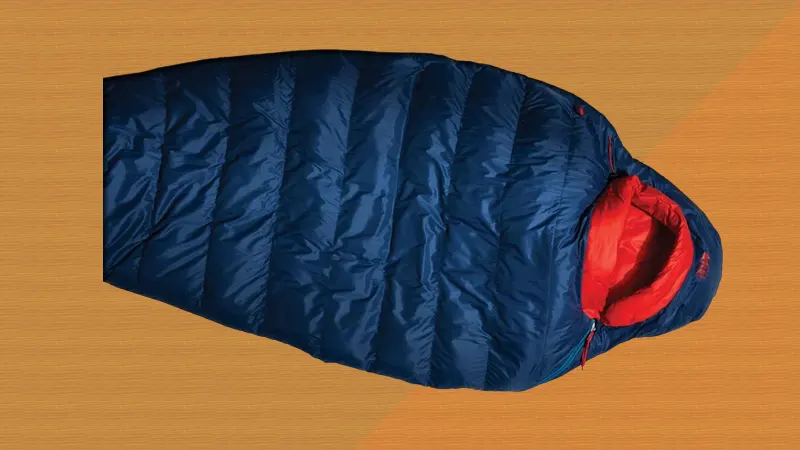
Due to their temperature ratings, they are essential in the winter. The most resilient pad would be a closed-cell foam one. Another choice would be a rigid inflatable sleeping pad.
For Food and Water Necessities
Securing your own food and water sources is essential, and your INCH pack should include the necessary equipment. The following are non-negotiable items:
Water Filter
There always needs to be more clean water, and one of the simplest methods to acquire clean water is using a water filter. You can’t always be sure that your water supply is pure, but a water filter increases your odds significantly. Better still, acquire lightweight water filters that fit your INCH bag like a glove.
Stainless Steel Water Bottle
You will need a place to keep your water. Even if you had liters of water, how would you drink it from those containers? Your solution is stainless steel or metal water bottles. It will also make an excellent cooking pot to boil water.
Water Purification Tablets
If you don’t want to boil water, purification tablets are another option for purifying your water. Most purification pills come in compact vials that fit easily into the pockets of your INCH bag.
Portable Cooking Set
Remember to bring dining and cooking equipment. Because you cannot consume raw meat, you must cook in a pot. Consider purchasing a portable cooking set or a mess kit for your INCH bag.
Utensils
A plastic spoon and fork would be helpful.
Also, ensure your bag has enough food to survive a week without needing to scavenge from nature. Here are a few example items:
- High-energy protein bars
- Nuts
- Oatmeal
- Meal replacement powders
- Tea, coffee, sugar sachets
- Chocolate and candy
- Hydration packs
For Fire Needs
You will need fire-making equipment to survive long, frigid nights and cook for food. Here are some things for your fire needs:
Matches and Lighters
You can’t go wrong with a BIC lighter stashed in your pocket. You don’t want to burn out your Ferro rod or run out of matches, so keeping a few BIC lighters in your INCH backpack will come in. Also, nothing beats suitable old-fashioned matches for lighting things up. You can put many of them in your INCH bag without taking up too much room.
Ferro Rods
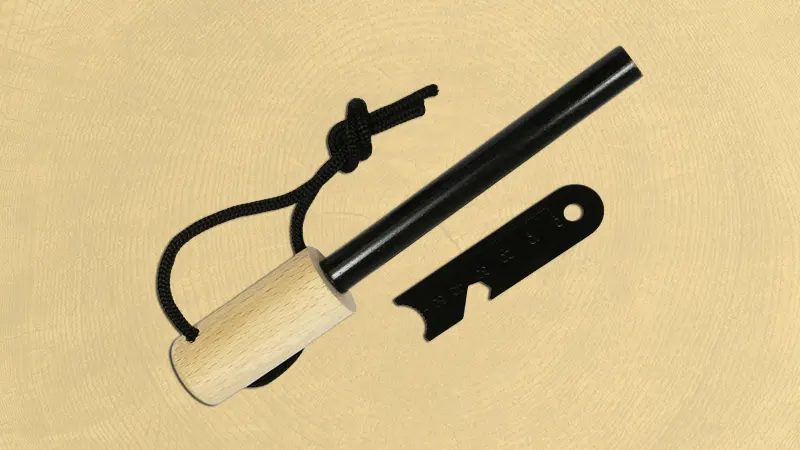
What better method to spark a fire than with a Ferro rod? For starters, it is waterproof. It doesn’t get wet when it rains and works in cold weather. It also does not need any fuel to create a fire. Two, it gets heated quickly.
For Hunting
Finding food through hunting is another crucial consideration.
Traps and Nets
When you are out in the wilderness, you need a reliable food supply, so hunting nets and traps will come in handy. It doesn’t have to be elaborate; you can create nets out of paracord.
Survival Bow
A takedown, recurve, or longbow would suffice. The most feasible would be a 45-pound survival takedown bow. A conventional bow is lighter than a compound bow and is repairable in the field.
Accessories for Bows
Bring at least a couple of extra strings because they don’t last long. Pack a lightweight armguard as well as a finger glove or tab.
Arrows
Bring at least six carbon arrows. They are both powerful and light. If you are going to shoot off the shelf, they should be feathered.
Arrow Points
Bring as many small game points as arrows and at least four bigger game points. For giant animals, fixed broadhead arrow tips would be more durable. Try to keep your grain weight constant throughout all of your spots.
Quiver
Bring a belt quiver or a bow hunting quiver. Make your lightweight bow quiver instead.
For Fishing
Along with hunting, specific fishing equipment may be extremely helpful.
Cast Net or Gill Net
A cast net might be preferable to a gill net for a lake, coast, or sluggish river. Gill nets are fantastic, but they operate best where there is current, like a river. Remember that since most are in monofilament lines, they will deteriorate with time.
Fishing Line
The fishing line, especially the braided one, is more adaptable and simpler to use. Bring 300 yards of 35-pound strength line and 300 yards of braided 65-pound line. Use it for trotlines, fishing, and so on.
Fishing Rod
Carrying a fishing rod means extra food on the table, especially while traveling. Fishing poles are small, strong, and easy to use. Bringing a full-sized fishing rod may be difficult, so consider carrying a smaller fishing rod, such as those used for ice fishing or any other kind of compact fishing rod.
Hooks
Hooks that are strong and large will endure longer. Small hooks may easily shatter with a larger fish. If your line is left overnight, having circle hooks increases your chances of locating a hooked fish.
For Navigation
The following navigation components should be in your pack to make things easier:
Maps
A topographic map of the region would be helpful. You may plan routes and safety spots and choose the best areas to settle down. You will also get a map to help you return to camp if you go too far away from it.
GPS Tracker or Watch
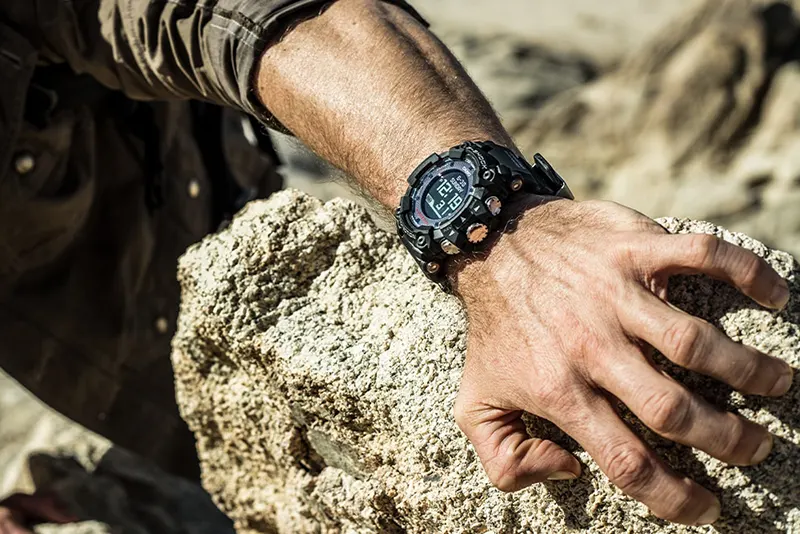
A GPS watch could be the way to go if you are searching for a watch to help you navigate. Of course, these watches should only be backups. Don’t depend exclusively on it since it will be worthless if an EMP strike occurs. Make sure you pick a GPS watch appropriate for your navigation requirements.
Compass
If you know how to read a compass, having one on hand will be helpful in conjunction with a map. Advanced navigation methods benefit significantly from a mirror compass. Impact resistant and waterproof compass is a must. As a backup, think about using one or two air-filled button compasses.
For Communication
Items that help you communicate with others in your group should also be in your INCH bag. Make sure you have at least one of the following with you:
Phone
If phones are still functional during SHTF, having one for communication is a brilliant idea—at least until it becomes worthless or damaged.
Radio
A radio would help keep up with what’s happening outside. You may keep informed and listen to alerts. A hand crank radio would be an excellent option. You may also have an AA battery-powered radio on hand, just in case.
Talking Device or Walkie-Talkie
Two-way radios, sometimes known as walkie-talkies, are helpful when phones are out of service permanently or in areas where a phone signal is difficult to get. It can also travel long distances. Furthermore, the battery will very certainly outlast your smartphone.
For Medical Needs
Remember to pack your medical needs in case of an emergency.
First Aid Kit
You may create the ultimate first aid kit, which includes the essential items you need in an emergency. Make sure your kit consists of the following:
- a dental and oral kit
- bandages
- a roll of duct tape to secure bandages, close wounds for first aid
- a compression bandage for compressing a wound
- sutures and needle
- band-aids
- Antiseptic liquid and wipes
- scissors
- tweezers
- gauze pad
- cotton
Pain Relievers and Survival Antibiotics
If you have a medical problem, you should stock up on medications. It is also helpful to stock up on pain relievers for first aid.
For Clothing
Consider layers, durability, and versatility for clothing. Depending on where you live, imagine heavy rain, snow blizzards, extreme desert heat, and soggy, muddy pathways. Also, be prepared for winter!
Raincoat or Rain Jacket

Make sure to bring durable raincoats that will not sag after weeks of intensive wear. Also, ensure you can wear all of your winter coats beneath this one so that you may use it as an outer layer.
Rain Pants
It is critical to have robust, long-lasting rain trousers. Waterproof (non-insulated) backcountry skiing trousers would be the most durable. They must have side zippers to allow moisture to escape.
Fleece or Wool Jackets
Starting at the outer shell, wool or fleece jackets are much more durable than the face materials of most lightweight down jackets. They are also inexpensive, and you may find an excellent one at a thrift shop.
Underwear and Base Layers
Underwear and base layers are essential components of your garment system. They should be wool or synthetic to offer a lot of insulation. Avoid wearing cotton layers since they quickly absorb heat from your body when wet. Wool is also less stinky than synthetic layers.
Hiking Shoes
If you want mobility, choose a rugged hiking shoe; if you want durability, choose an urban leather boot. Another factor to consider about shoes is that they will only last 1-3 seasons, depending on the shoe. It will help if you become accustomed to going barefoot.
Shirt with Long Sleeves
A synthetic shirt with rolled-up sleeves is valuable, especially around areas with many pests.
Long-lasting Hat
A hat or a cap keeps your head cool and may also be compatible with your rain jacket’s hoodie. There are also some rainproof hats available.
Lightweight Gloves
For the chilly weather, wear cold-weather gloves. Durable thin leather gloves suffice and have insulation in the back of the hand.
Belt
You will need something to hold your trousers and track how much weight you’ve shed. A survival knife or hatchet fastened to your belt is also convenient. Bring a strong yet lightweight belt.
Thick Socks
Look for thick socks with long-lasting materials, and remember that you may have to go without them—pack one or two pairs of socks with varying thicknesses for hot and cold weather.
Clothing for the Winter
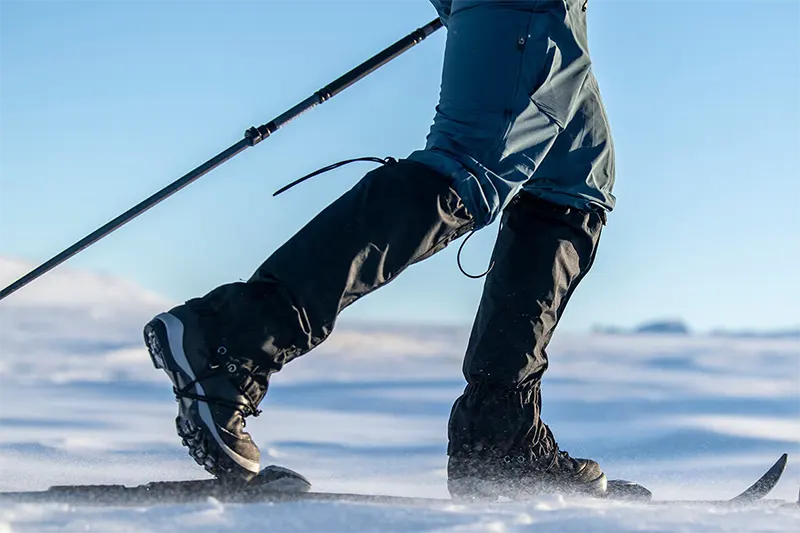
Depending on your location, you will most likely need additional winter clothing. For those long, chilly winter evenings, you’ll need another fleece or wool jacket.
You may also want to bring gaiters for the snow. Gore-Tex gaiters are ideal, although other textiles might suffice. You will only need this item if you already have overboots or jeans with loops to function as gaiters.
You can also pack additional boots for the cold. They should be long-lasting, and most essential, they should not restrict blood flow to your toes. If you live in a location that has blizzards, wearing goggles that protect your eyes from the cold and UV rays reflecting off the snow is a great idea.
Other Necessary Things
We have covered the essentials, so here are some extra items to add to your INCH pack for the ultimate survival run.
Survival Knife
A fixed-blade, stainless steel knife that is pleasant to use regularly would be ideal. You will need local resources to sharpen a serrated knife outdoors.
Survival Hatchet or Axe
Choose a survival hatchet with a sheath that is 30 cm long. A 60 cm axe is another alternative that would be wonderful for shelter construction and tree felling, but it is considerably heavier.
Cord
Pack about 250 feet of 550 types III nylon paracord. Packing 250 feet of 2mm cable when breaking strength is not a concern.
Portable Saw
When cutting wood for shelter or a fire, a good survival portable saw will save you a lot of time and energy.
Multi-Tool
You can never go wrong with an excellent survival multi-tool. A million small situations in which having one of these in your own INCH bag will be helpful.
Lens
Make use of a magnifying glass lens as much as feasible. Fresnel lenses are very light; however, they only last for a short time as glass lenses and are not as strong. Bring a 6″ magnifying glass or 3-5 credit card-sized fresnel lenses.
Small Repair Kit
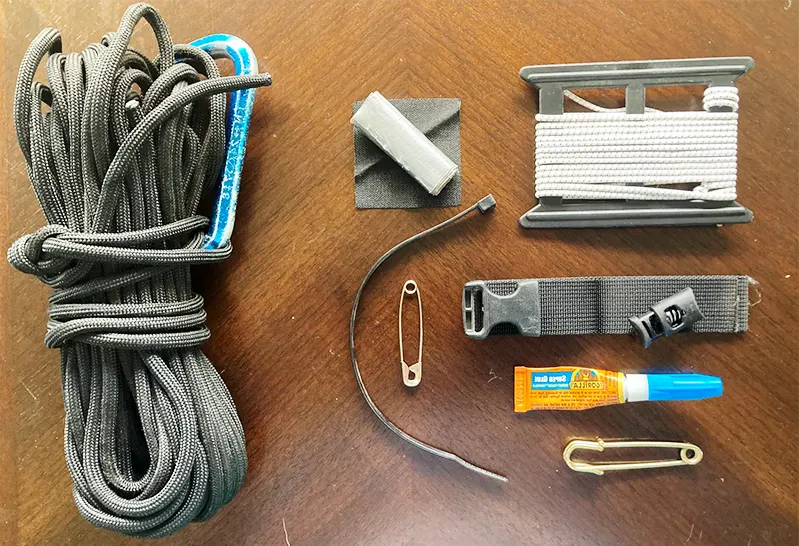
Duct tape, snare wire, epoxy, sewing kit, zip ties, and fabric for patches should all be in the little repair kit you’ll need to maintain your basic survival gear in good working order as you convert to natural materials.
Other basic tools and equipment you will find valuable include:
- Cash
- ID cards
- Important documents
- Personal hygiene kit
- Hand crank or solar-powered flashlight
- Headlamp
- Bandana
- Safety pins
- Notepad and pencil
- Garbage bags
- Head net for bugs
- Nails
- Screwdriver set
- Measuring tape
- Sewing kit
- Wire cutter
- Zip-seal bags
- Assortment of small batteries (AAA, AA, 9V, etc.)
- Rope or paracord
- Survival shovels
Additional Tips
- The ideas of redundancy and durability are crucial for putting up an acceptable INCH survival bag. Redundancy entails being able to construct a long-term shelter even without your axe. The reason why mountaineers always have two pairs of work gloves is that they value their fingers.
- The contents of your luggage and pockets are critical to your life. Use multitools as much as possible, but triple-check each tool to ensure it works as it should.
- Check that any pack you purchase has redundant stitching and strong strength attachment points on all vital connections and components. Use sailmakers thread, which is extremely thin yet robust, to reinforce all the gear and sewing sites.
- The most common errors individuals make are not carrying essential equipment and believing they can purchase some things as they go.
- The weight is proportional to your ability to bear it. If you take a 100-pound pack regularly, it is no more challenging to carry than that other guy’s 40-pound pack, which he packed but only had twice.
- Avoid wearing brightly colored bags since they will make you a target as you navigate groups of looters and desperate individuals attempting to live.
- Knowledge, experience, and survival skills enhance the INCH kit.
Conclusion
Coming up with the ultimate INCH bag will be a snap with some curation as long as you know what you’re bringing, why you’re packing them, and how to utilize them.
Furthermore, the process of deciding on actual content is an excellent practice. It will help you think about what you genuinely require and improve your prioritization skills in a survival situation.

Enough with the word utilize as in “…So, when should you utilize the INCH bag…” utilize does not mean what you think it does. When something is utilized it is being used for other than what it was designed for. Example, we use a chair to sit upon, however we can utilize as a step tool. Also, utilize is what our body does with medication. Using utilize comes across as pompous and self-ingratiating. Using utilize does not make the writer sound more educated.